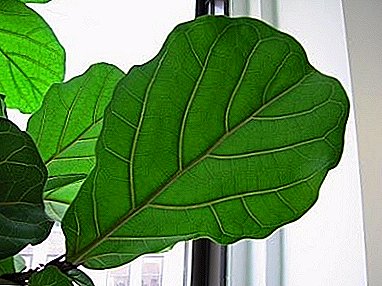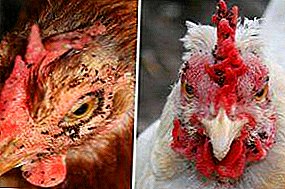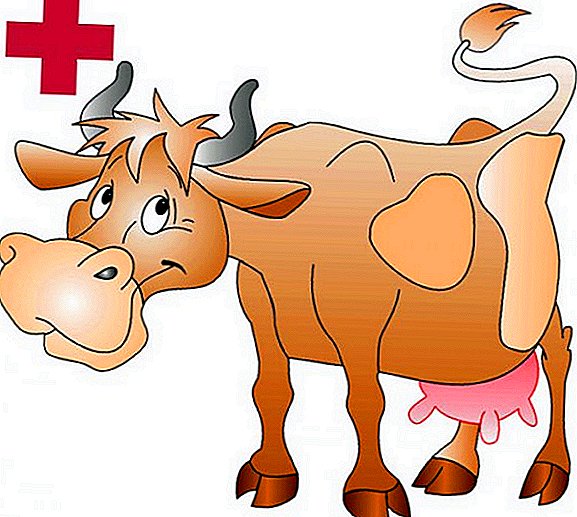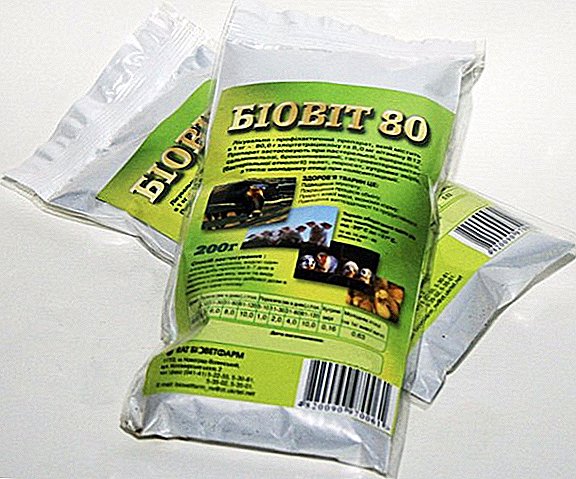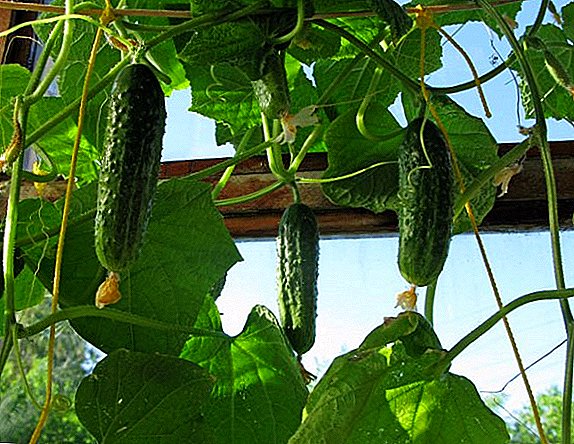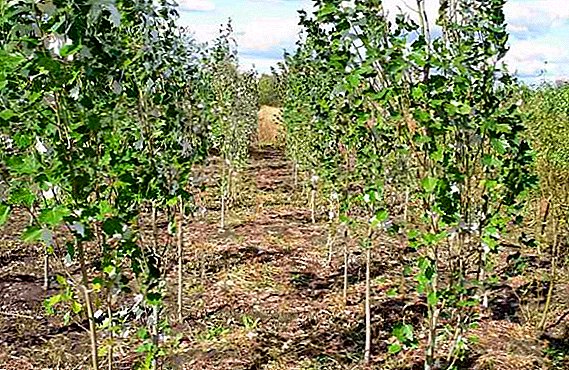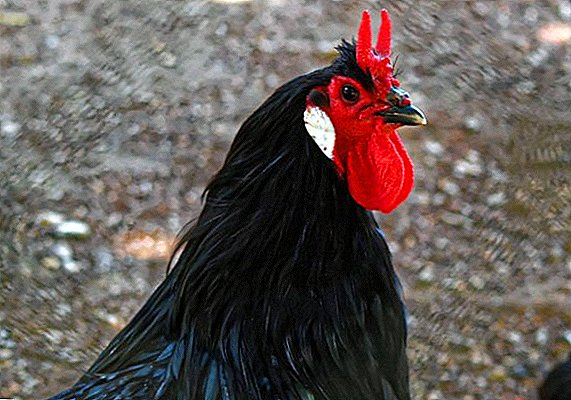 Sometimes the size of the suburban area does not allow to allocate enough space for the beds with such popular vegetables as cucumbers.
Sometimes the size of the suburban area does not allow to allocate enough space for the beds with such popular vegetables as cucumbers.
In this case, the summer resident can save the cultivation of high-yielding varieties "Siberian garland F1".
Cucumbers of the future: description
From the F1 index in the title shows that the "Siberian garland F1" refers to the hybrid varieties. It was recently launched at the Chelyabinsk Breeding Station. It is distinguished by a special type of fruiting: in the place of a single flower several fruit ovaries are formed.  These varieties are also called "bundle" or "bouquets."
These varieties are also called "bundle" or "bouquets."
Hybrid "Siberian garland F1" is suitable for cultivation, both in the greenhouse and in the open field. These cucumbers are quite resistant to both hot and cool weather, as well as prolonged rains.
Important! The variety is parthenocarpic, i.e. it sets fruit without pollination (varieties of this type are also called "self-pollinated").
Bushes
This variety forms powerful plants with abundant foliage that need to be formed. Cucumbers "Siberian garland F1" must be formed strictly in one stem.
Fruit
As with almost all varieties of bouquet type, the fruits of the "Siberian garland F1" are small. Their size does not exceed 8 cm. At the same time, they do not outgrow, they have a pronounced aroma and sweetish taste. Fruits have a thin peel of dark green color.
They are small-tuberous with white not prickly thorns. The flesh is juicy, crunchy, without voids and bitterness.  These cucumbers are suitable for fresh consumption, and can also be used for various pickles, pickles and other preservation.
These cucumbers are suitable for fresh consumption, and can also be used for various pickles, pickles and other preservation.
Did you know? Botanists define the fruit of a cucumber as a pumpkin, since its structure is similar to the structure of fruits of plants of the Pumpkin family.
Advantages and disadvantages
Among the advantages of the Siberian F1 garland, it is worth noting the high yield of this variety, along with continuous long-term fruiting, its precocity, the ability to self-pollination, resistance to diseases, excellent taste of the fruit.
In addition, "Siberian garland F1" adapts well to different weather conditions.
Check out such cucumber varieties as "Taganay", "True Colonel", "Masha", "Competitor", "Zozulya", "Nezhinsky", "German", "Courage".These cucumbers are not without drawbacks. So, they are quite demanding to care, and it is desirable to carry out the collection of fruits regularly, ideally every day, otherwise the development of new ovaries is inhibited.

Characteristics of a variety
As mentioned above, the Siberian garland F1 gives high yields. In the advertising description of a variety, seed producers promise up to 400 fruits from one bush per season - it is clear that this is possible only with careful care and favorable weather conditions (if the hybrid is grown in open ground).
The harvest of these cucumbers ripens very early. From the appearance of sprouts to the beginning of fruiting it takes about a month and a half. Fruiting occurs evenly throughout the season. In regions with a milder climate, the crop is removed until the autumn frosts.
Did you know? Homeland of cucumbers is considered the Indian foot of the Himalayan mountains. In those parts you can still meet the wild forms of this vegetable. He was cultivated, it is believed, about six thousand years ago.
Features of growing
This is not to say that this hybrid is very whimsical, but it is necessary to know the peculiarities of its cultivation, which will allow to fully unleash the potential of the variety. Let us see how to grow the Siberian F1 garland correctly. 
Lighting and location
First of all, the landing site of the “Siberian garland F1” should be shaded, although not excessively, because the sprouts and seedlings do not tolerate direct sunlight.
Planting cucumbers in the shade of fruit trees, sunflower or corn is a good solution. In extreme cases, for shading you can use an awning.
It is necessary to consider which crops grew in the intended landing site. Corn, potatoes, onions, white cabbage, and tomatoes are considered desirable precursors. Undesirable cultures include zucchini, beetroot, pumpkin. 
Soil type
The soil for the "Siberian garland F1" should be light, fertile and neutral (in extreme cases, its slightly acidic reaction is allowed). Sour and heavy soils are not recommended.
Planting cucumbers
These cucumbers can be planted in different ways: both through the stage of growing seedlings, and by planting seeds directly in open ground.
Growing seedlings
For sprouting seedlings begin to plant seeds in March - early April (depending on the climate in a particular area). For planting, common containers or individual containers with fertile soil are used, which are covered with a film until germs appear.
Depth of landing makes 20 mm. The optimum temperature in the room, where the seedlings grow, is equal to +25 ° C.
The soil in the tanks with seedlings periodically moistened. The plant does not need any other care at this stage. Usually the seedlings are ready for planting in open ground or in the greenhouse 25-30 days after sowing the seeds. 
Planting in open ground
"Siberian garland F1" can be planted in open ground, both in the form of seedlings and seeds. In any case, it is highly desirable to prepare the ground for this procedure in advance. It is necessary at least one month before planting, and preferably in the fall, to bring rotted manure into the soil.
Seedlings are planted when the threat of spring frosts finally disappears. Before planting and after it the ground is watered abundantly with warm water. The distance between plants is kept at about 70 cm, and between rows - 15 cm.
If a decision is made to plant seeds on a bed, then it is necessary to wait until the ground warms up to +15 ° C. Immediately before planting, the cucumber seeds are kept in warm (+30 ° C ... +35 ° C) water until the shoots hatch.
It may take 2-3 days. Sprouted seeds are planted in the ground to a depth of 15 mm, planting plentifully watered with warm water and covered with foil. 
Peculiarities of care
Only proper care for the Siberian F1 garland will provide a high yield. Care rules are generally simple, but they must be followed carefully.
Watering
This variety, as well as all cucumbers, needs regular abundant watering. Before the appearance of the ovary, greenhouse beds with this vegetable are watered every 3-4 days. After the appearance - every 2-3 days. If the cucumber grows in the open field, then watering depends on the weather (heat, coolness, precipitation).
Important! Special requirements - to water quality. It should be heated to +23. °From ... 25 °C, and besides, stand at least a day.
Watering from the watering can or the whole bed, or used for watering the grooves between rows. The watering itself is produced in the early morning or in the evening, when the plant does not risk getting burns from direct sunlight. 
Fertilizer
Feeding vegetables should be carried out too often, enough 4 times per season. For the first time it is fed after the appearance of the fifth leaf of the shoots. To do this, you can use a solution of urea (25 g) and superphosphate (50 g) per 10 liters of water. Alternatively, apply a solution of fresh cow dung (1 part manure to 8 parts water).
Learn all about feeding cucumbers, how to feed cucumbers with yeast, about the rules of feeding cucumbers with folk remedies.Approximately two weeks after the first feeding, when the plant blooms, carry out a comprehensive fertilization. Spray the leaves with a solution of superphosphate (50 g per 10 l).
For irrigation, a solution is prepared that includes ammonium sulphate (25 g), superphosphate (45 g) and potassium sulphate (15 g), which is diluted in 10 liters of water. Chalk or crushed charcoal is dispersed over the beds at the rate of 200 ml per 1 sq. Km. m
One week after the appearance of the first fruits, it is possible to use liquid complex fertilizers for cucumbers for top dressing. They are prepared and made according to the instructions.  The fourth dressing is carried out a week and a half after the previous one. For her, you can use the infusion of cow dung. To make an infusion, mix a part of the manure with two parts of water, seal it tightly, let it stand in a warm place for several days, then add ten times more water.
The fourth dressing is carried out a week and a half after the previous one. For her, you can use the infusion of cow dung. To make an infusion, mix a part of the manure with two parts of water, seal it tightly, let it stand in a warm place for several days, then add ten times more water.
Forming a bush
This variety is always formed in one stem. To do this, its first four nodes are blinded, i.e. all the ovaries and stepchildren are plucked out. When the plant grows another 3-5 leaves, remove all side shoots, flowers, and leave the ovary.
In the future, do the same, until the stem reaches the top of the trellis. When the stalk reaches the top, its top is cut. Around the trellis, the stems are wrapped when they grow about 25 cm.
Protection against diseases and pests
Cucumbers "Siberian garland F1" are resistant to diseases, but still sometimes can be affected by root and gray rot. In such cases, diseased shoots and fruits are cut, the cut points are treated with a mixture of wood ash and vitriol (12: 1 ratio), plants are treated with fungicides.  Of the pests of this hybrid may be threatened by aphid, fly miner, spider mite, thrips. They are fought with insecticides. It should be emphasized that pests, like diseases, very rarely threaten the "Siberian garland F1".
Of the pests of this hybrid may be threatened by aphid, fly miner, spider mite, thrips. They are fought with insecticides. It should be emphasized that pests, like diseases, very rarely threaten the "Siberian garland F1".
Harvesting and storage
In the midst of fruiting, it is advisable to collect the fruit every day, otherwise they do not allow new fruit to start. In the fridge fresh, they can be stored for a week. This hybrid is widely used in winter blanks, it canned in a variety of ways.
Did you know? 1 kg of cucumber contains only 150 calories, which makes it a desirable component in many diets.
As we see, the variety "Siberian garland F1" is distinguished by exceptional yield and high taste qualities. However, all this can be achieved only with careful care of this hybrid.



